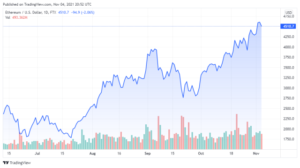
Contrary to what many might think, SMEs have an advantage over large companies which is their reactivity. Because of the simplified flow of information, which is both fast and flexible, it is actually easier for a small or medium-sized company to set up and use Big Data effectively.
In addition, it is not necessary to have access to huge financial resources to implement Big Data in a small or medium-sized business.
Overpriced servers and databases are a thing of the past. Big Data is now much more accessible thanks to tools designed at the scale of SMEs. You can use data already present in the running of your company: its social networks, its website, its CRM, data from HR departments, etc.
Data from third parties can also be very valuable: various databases, Google and Facebook ads, recruitment sites, etc. All this data, efficiently analyzed, constitutes a solid basis for answering most of the problems of a company.
Finally, the secret of the success of such an operation also and above all lies in the rigor with which it is carried out. The implementation of Big Data in an SME requires the consideration of three essential points:
- Determine a precise objective, otherwise a Big Data project may not bear fruit. It is therefore essential to ask yourself for what purpose are you going to use it before going any further.
- Surround yourself with competent people for the implementation and management of the project. A Data Scientist can assist you in your process. You can recruit one or use a company specializing in Big Data.
- Allow sufficient time to set up data mining for it to be relevant. Indeed, Big Data projects are quite time consuming and teams must have enough time to implement them.
Examples of the use of Big Data in business
1) The use of Big Data for recruitment.
Big Data has notably enabled the development of recruitment optimization methods. Thanks to Big data Analytics, HR departments are more easily oriented towards the best candidates in order to optimize the selection.
In this way, the costs and recruitment times are considerably reduced and it is even possible to predict future recruitment needs.
2) An aid to predictive maintenance in the aeronautical sector.
As crazy as it sounds, Big Data can also keep you safe while traveling by plane. Indeed, thanks to algorithms capable of predicting the date on which the parts will break, considering factors such as time, stresses exerted or frequency of use, preventive maintenance is implemented.
In this way, potential accidents are avoided and the aeronautics industry gains by investing upstream in maintenance processes.
3) Data mining, a loyalty technique for banks and insurance companies
After a wave of customer dissatisfaction with the services offered by banks and insurance companies, the latter turned to big data to discover the source.
The main observation that has been made is that of the importance of mobile services and their level of personalization. It turned out that they played a very large part in the appreciation that clients had of the quality of service.
In order to build a lasting and adequate customer relationship, measures were thus taken by analyzing data that most of these banks and insurance companies already had.
They were thus able to develop their mobile offer on the appropriate channels and understood that innovation went hand in hand with customer expectations.
4) Use Big Data to personalize your experience on e-commerce sites
Faced with the competitiveness of the e-commerce sector and the volatility of consumers (the average browsing time on an e-commerce site has fallen to less than 5 minutes), one observation has been made: mass discourse and a too broad categorization no longer correspond to the current market.
Quickly, the personalization of the navigation was chosen as the best way to capture the attention of the target. Thanks, in particular, to personalized product suggestions made possible thanks to Big Data.
Following this analysis, a number of e-commerce sites manage to offer a smooth navigation that is perfectly suited to their visitors.
Amazon, for example, personalizes its site’s homepage based on your tastes, interests, previous research, and data mining.
Netflix, on the other hand, manages to generate more than 33 million different home pages to offer its users content that they like.
5) Thanks to Big Data, a Japanese cosmetics brand is discovering a new target
By seeking to exploit the traces left by users on the web to “generate business”, a major cosmetics brand has discovered an incongruous target!
Indeed, by looking at the results of their Big Data project, the brand realized that sunscreens were highly popular with male customers, unlike the rest of the products.
By digging a little more into the data of these customers, it appeared that most of them were golf enthusiasts and that the product therefore naturally interested them.
The brand has therefore taken note of this specificity and revised its marketing according to this new target.
6) Allow your business to be ultra-visible thanks to retargeting
Retargeting: behind this barbaric word hides a technique that you know well. This consists of offering a user targeted advertising during his future visits to other sites.
By relying on behavioral data from their browsing history, it is thus possible to “track” potential buyers even if they are no longer on your site. Thanks to advertising agencies – whose objective is to obtain the maximum amount of advertising space – this data is collected and makes it possible to display promotional banners in a targeted manner.
By dint of visibility, this makes it possible to make the Internet user return a second time (or more) to your site, up to a potential purchase.
7) Airlines and dynamic pricing
Big data is notably exploited by airlines to adjust ticket prices based on customer trends, profiles and travel habits. The principle is simple: the company first identifies the person looking for a flight, then uses their data (in part thanks to their customer account and their history) to vary the price of the ticket.
Thus, the conversion rate increases significantly by offering more affordable fares to new customers and more expensive tickets to “business” travelers who are less likely to be put off by the additional costs.
Author Bio:
I am Bhavesh Parmar. As a Profession Digital Marketing Manager, HData Systems. I like listen to Music and Internet Surfing.



